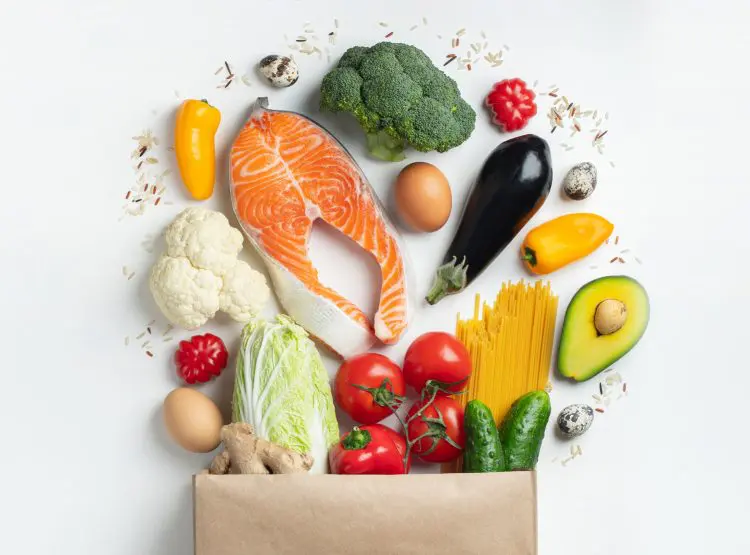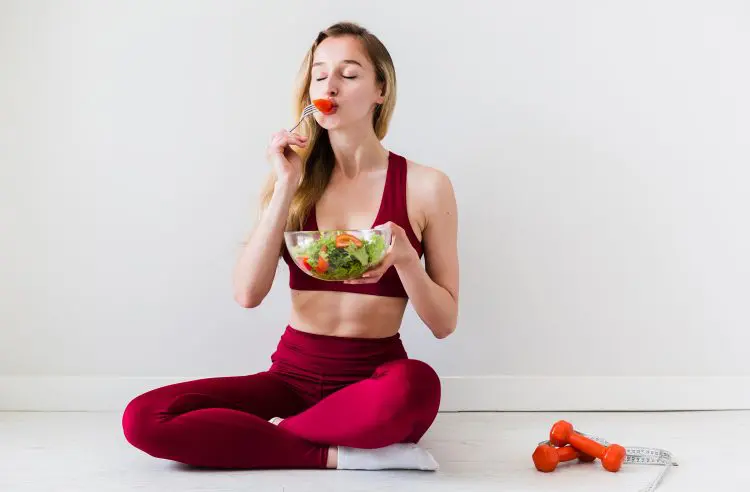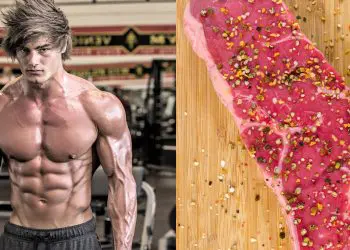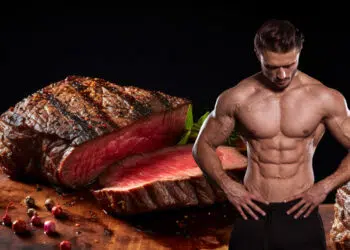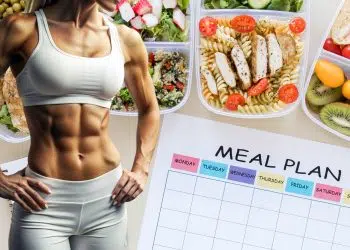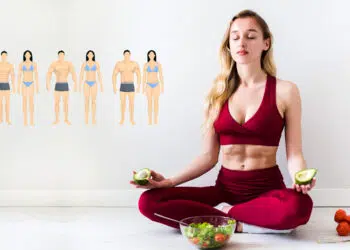If you’re serious about showing off your hard-earned muscle, then a proper cutting diet plan is a must. Sure you could wing it, but you might not get the kind of results that you could with some strategy.
No, you don’t have to be picture-perfect but proper nutrition, training, and will-power are key to making progress in a reasonable amount of time.
Cutting involves reducing your energy balance (caloric deficit) either by eating less or doing more physical activity so that your body shreds the fat pounds. It’s recommended to engage in a weight training regime simultaneously.
In this article, we’ve put together a plan that anyone can use, but you’ll need to read through if you want to tailor it to you.
What is “Cutting” and Why Is It Important?
We’re glad you asked. Cutting essentially means losing body fat and it’s usually paired with the term “bulking,” – where you undergo a phase that entails trying to gain muscle size at a faster rate through eating a caloric surplus and focusing on increasing strength and training volume.
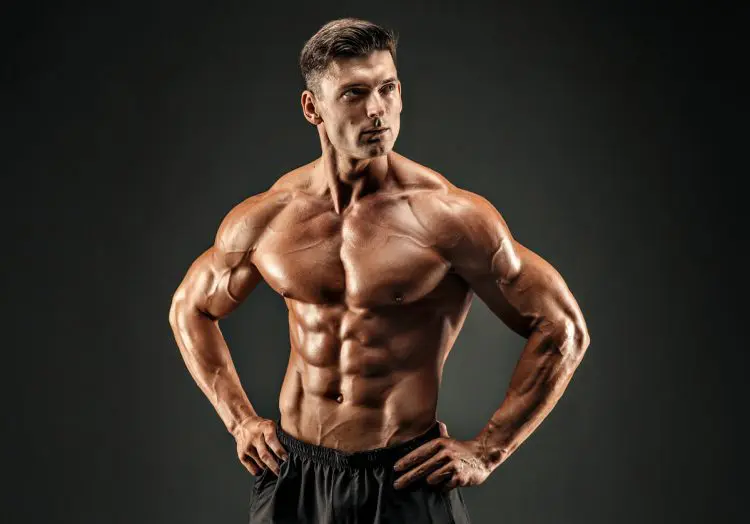
Level Up Your Fitness: Join our 💪 strong community in Fitness Volt Newsletter. Get daily inspiration, expert-backed workouts, nutrition tips, the latest in strength sports, and the support you need to reach your goals. Subscribe for free!
A cutting phase can be done before or after (usually after you’ve gained muscle size and body fat) bulking, or a standalone method, and it’s a great way (when done safely) to shred fat fast so you can fully reveal those sexy muscles underneath…
Now, you can burn fat by either reducing your calories below maintenance (calories required to maintain your current weight), or you can simply do more physical activity/weight training to burn more calories.
We’ll touch more on this part shortly.
So what happens when you reduce calories?
When the body consistently has fewer calories/energy than it needs, it goes into a catabolic, fat-burning mode because there are not enough resources to maintain or create fat tissue (1).
If not careful, you can lose muscle too if you cut your calories too fast or too drastically although the more you reduce calories, it’s inevitable, but less likely if you’re on anabolics.
Related: Bulking vs. Cutting: The Best Methods To Accelerate Gains!
Where Do Macros Factor Into All Of This?
We were just about to get to that because it DOES matter.
Macronutrients (macros for short) include protein, carbs, and fats. Why are they called macros? Because the body needs these nutrients in larger amounts compared to micronutrients such as vitamins and minerals.
As you probably know, protein is found in all body tissue including muscles. But it’s also important for hormones and several enzyme reactions.
An effective cutting diet plan should consist of high protein to keep muscle tissue while the body is in a catabolic, fat-burning state.
Carbohydrates are the body’s main energy source and fats are also used for energy but play a role in hormone production, nutrient absorption, and more.
Certain (starchy, sugary) carbohydrates retain water when stored as energy in the body. A carb-heavy diet can not only add up in calories but it’s also not recommended if you’re not a very active individual.
Plus, eating the wrong carbs is simply unhealthy but that goes for fats and proteins too.
Most people don’t pay attention to how much of each (macro ratio) macronutrient they consume throughout the day. However, if you have body goals, then macros should be split up into an appropriate ratio.
This will, of course, vary between individuals based on many factors (e.g., body composition, activity level, weight, health, goals, etc), although, typically, percentages are used to determine an appropriate macro range.
A lot of people think that focusing on calories in/calories out is all that’s needed to sculpt a midsection like a Greek god and get vascular like Ronnie Coleman.
If you have god-tier genetics then you’ll be closer than most with that strategy. However, if you want to reach your full potential, it ain’t happening.
What’s a good macro ratio for cutting?
This will depend on factors previously mentioned, and if you want as accurate of an estimate as we can give you then you should use our macronutrient calculator.
Simply type in your basic information and you’ll receive the ideal ratio for cutting, maintaining and bulking goals.
In one 2004 review, “macronutrient considerations for the sport of bodybuilding,” it was determined that a diet of at least 30% protein is best for preserving muscle during an energy/caloric deficit to oxidize fat (2).
In addition, sufficient protein intake provides a significant thermic effect to further enhance the fat loss process.
The same review determined that 55-60% of the diet should consist of carbohydrates to maintain energy during training. You want to be able to maintain a lot of your strength while cutting as this will enable you to preserve more muscle mass.
But having sufficient carbs also prevents the body from using protein as energy rather than building muscle tissue.
Lastly, dietary fats should comprise 15-20% of the pre-contest diet.
Additionally, consuming protein with sufficient amino acids and carbs before and after resistance training was shown to have a great effect on protein synthesis (building proteins), prevention of muscle loss, and glycogen resynthesis.
Protein and carbs seem to have a synergistic effect on insulin secretion and this is optimal for growth and triggering fat loss (3).
Carbs should be consumed at a 1.2g/kg/hour every 30 minutes for four hours and should be high glycemic index.
Another study from 2014 on natural bodybuilding pre-contest nutrition explained that an ideal macro ratio to cut is 2.3-3.1 g/kg of lean mass per day of protein, 15-30% from fat, and the rest from carbs (4).
So there seems to be a consensus on an optimal macro range when the goal is cutting. However, the ratio also works for gaining muscle mass with the difference being overall calorie intake.
How many calories should I eat to cut?
There’s no one-size-fits-all answer to this. It really depends on your metabolic rate or metabolism, total calories burned per day, health, body fat, anabolics use, and more.
The macro calculator linked above estimates your metabolic rate and calories burned and will suggest the ideal number of calories that you should consume every day to reach your goals.
A common recommendation for cutting or bulking is to consume a 500-calorie deficit or surplus respectively in an effort to lose a pound or so per week.
This would equal 3,500 total calories which is believed to equal a pound of bodyweight. However, this is based on old research and newer studies have come out to sort of debunk what is often referred to as the 500-calorie deficit myth.
Level Up Your Fitness: Join our 💪 strong community in Fitness Volt Newsletter. Get daily inspiration, expert-backed workouts, nutrition tips, the latest in strength sports, and the support you need to reach your goals. Subscribe for free!
Don’t get us wrong, reducing your calories by any amount can certainly cause weight/fat loss but long-term, you’ll need to be more strategic about it.
OK, how much weight/fat should I be losing on a weekly basis?
Good question. According to the same previously mentioned study from 2014 (4), those looking to cut body fat while maintaining muscle mass should aim for approximately 0.5-1% (1 lb) body weight loss per week.
We hope that answers your question, but keep in mind, age, genetics, diet, health, anabolics, and other factors can play a role as well. Therefore, some people may be able to lose more while others will do better aiming for a more conservative number.
Now, if your goal is simply weight loss and not just fat loss, which includes glycogen, water, muscle, then you may be able to lose at a faster rate.
Although, for your health, you don’t want to lose weight too quickly. Cutting weight too quickly without proper nutrition can leave you deficient in nutrients and especially for women, it can negatively affect hormones.
Cutting Diet Plan
OK, so now we’ll get into the actual diet where we’ve provided a cutting diet plan that anyone can follow. This section includes an example meal plan with a few different food combinations to choose from per each meal.
Keep in mind though, we cannot give an exact calorie amount as this is something that varies between individuals.
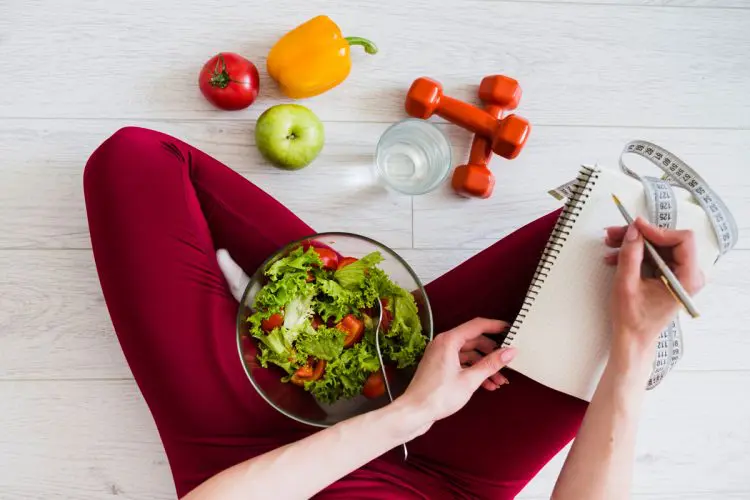
We also recommend using our nutrition facts analysis tool that contains a large database of foods/nutrition info or MyFitnessPal.
Of course, if you’re more experienced than you know exactly how to structure your regime for an effective cut but you can still use the meal plan below.
The following is based on a 7-day, 5-meal per day plan and consists of healthy food choices, although, if you do feel the need to sin a little, factor it into your calories and macros if possible.
We recommend buying high-quality nutrition such as fresh, grass-fed meats, pasteurized eggs, quality-dairy sources with no added sugars, etc. Also, be mindful of sauces and condiments that contain lots of calories and sugars.
Each meal will have a few different options to choose from so feel free to mix and match but again, make sure to remain within the appropriate calorie and macro percentage ranges.
Alright, let’s get started.
5-Meal/Day Cutting Diet Plan
Note: Make sure to choose only one of the options in bullets below each meal. There are vegan and non-vegan options.
Meal 1
- 1-2 whole eggs for protein, fats, and other nutrients, egg whites (pure protein, no fat), oats or grits
- Egg whites, Ezekiel bread/toast with hummus
- Breakfast burrito: Tofu scramble (vegan version of scrambled eggs), diced cooked potatoes, onions, red bell peppers, mushrooms, half an avocado, arugula or spinach, and salsa all encased in a tortilla. Feel free to modify how you like. Use your favorite seasonings and add some non-dairy milk to make the scramble creamy.
- Protein yogurt pudding
- Protein shake w/ water or nut milk, 1/2 tbsp nut butter, and banana
- Green protein smoothie
Meal 2 (pre-workout unless you train after breakfast)
- Chicken or turkey breast, sweet potato or yuca, and mixed veggies
- Beef w/ sweet potato or quinoa and veggies
- 1-2 black bean, lentil, or soy patties w/ 1 tbsp condiment of choice, white (Jasmine or Basmati) or brown rice, half an avocado, and green vegetables, i.e., spinach, kale, chard, broccoli, greens, etc
- Veggie or whole-grain pasta with ground meat and a light sauce, veggies
Meal 3 (post-workout)
- Whey or plant-based protein shake, fast-digesting carb like fruit/natural fruit juice, or a homemade carb drink
- Choose any option under meal 2
- Vegan pizza with non-flour base, fat-free or low-fat cheese, and light sauce w/ veggies
- Chicken breast wrap with veggies
- Low-fat ground beef/steak tacos wrapped in lettuce or low-calorie wrap
- Butternut squash and tempeh tacos
- Acai bowl
Meal 4 (snack)
- Protein bar/shake
- Jerky
- Low-fat, low/no-sugar loaded salad w/ choice of lean meat/shrimp, light low-fat/sugar dressing(e.g., lemon, homemade balsamic, rice vinegar, etc)
- Toasted rice cake/s with a little nut butter and a banana
- Smoothie
- Low-calorie veggie soup
Meal 5 (Bedtime meal/snack)
- Egg whites, spinach, and almonds
- Low-fat cottage cheese and light fruit (berries)
- Casein or plant-based protein shake
- Low-calorie veggie soup
- Low-fat/skim milk
- Nut butter and a slice of toast
Add a potent fat-burner to help accelerate your fat loss.
Meal timing, refeed days/calorie cycling
Timing is sometimes an important factor when it comes to nutrition and specific goals. In fact, we mentioned above that having protein before and immediately after exercise can maximize protein synthesis and muscle retention.
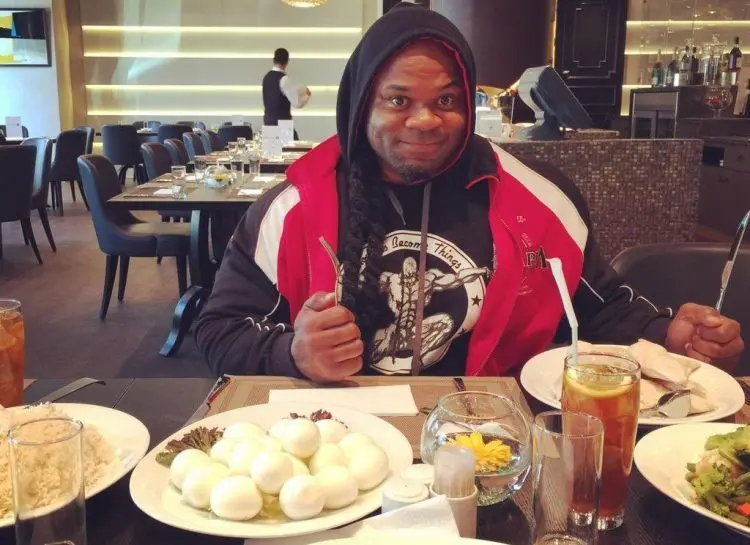
Not to mention, for athletes who need to perform, having that energy is very important.
But for cutting, timing does not matter as much, although we still suggest eating enough protein and carbs to sustain your workouts (5).
Now let’s talk a little about a strategy called refeeding and cheat meals (you already know what that is).
Refeeds/calorie cycling essentially gives the dieter a real from their strenuous eating regime. It involves incorporating a few higher-calorie days in the form of carbs and fats.
This can prevent mental burnout, give you more energy for training, decrease hunger, and have a positive impact on metabolic factors related to metabolism.
Learn more about calorie cycling here.
What About Training and Cardio?
Cutting does not mean you get to take it easy on the weights, especially if you’re transitioning from a bulking cycle; a process that typically maximizes strength gains.
You still need to use challenging levels of resistance to maintain that muscle mass. This will also help you to burn fat as muscle tissue burns extra calories as does and training in general (6).

Ideally, a periodized training regime should be utilized and each body part should be trained twice per week minimum. It’s recommended to spread out your sessions to avoid doing much volume in a session (6).
This prevents overtraining and the potentially detrimental effects of pushing yourself too hard while in an energy deficit.
Related: Block Periodization vs Linear Periodization – Which Is Best?
As for weight used, a 6-12 rep range using 70-80% of one-rep max is ideal the majority of the time. Although, you can mix up rep ranges and do fewer or more.
Now, you can train to failure but this should mostly be reserved for single-joint isolation exercises. Otherwise, it’s advised to cut reps just short with heavy compounds such as deadlifts, squats, etc.
Additionally, 40-70 reps per muscle group per session and even more for advanced exercisers is suggested in recent literature.
Rest intervals should be anywhere from 1-3 minutes between but this can be modified as needed.
The more advanced you are, the better you’ll be able to adjust your training regime to elicit the desired results. But we recommend most people stick with this guideline.
If you want to maximize your fat loss potential, add in cardio activities with resistance training.
Related: Most Effective Ways To Burn Body Fat Without Doing Cardio
How Long Does A Cutting Cycle Last?
Some people do mini-cuts but a typical cutting cycle can be anywhere from 2-4 months, especially when leading up to a bodybuilding contest. The rate of fat loss can occur at a much faster rate than can gaining muscle so this is usually a quicker cycle than bulking.
If you have a lot of body fat then it’ll obviously take longer to accomplish this. But it really depends on your goals.
And, of course, like bulking, enhanced individuals will see results much faster. But for the natties out there, a 1-2 lb loss of fat per week is optimal.
Wrapping Up
We’re confident that the cutting diet plan we put together can be beneficial for anyone looking to shred body fat and looked jacked.
While you don’t necessarily have to track your macros whether that’s writing it down or using a tool like a calculator or app, you should at least have somewhat of an idea of the ideal macro range that’ll ensure you make the desired progress.
You’ll also need to do a little work to find your optimal calorie range so that you can be in fat-burning mode but it’ll all be worth it when you lose fat in record time and keep most of the muscle that you worked hard for.
Also read: The Missing Piece of The Bulking and Cutting Jigsaw.

